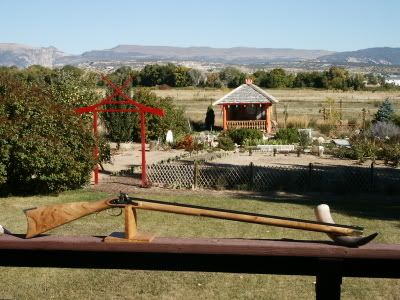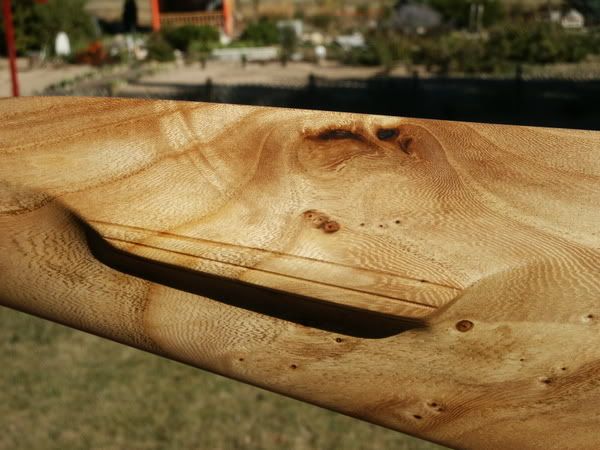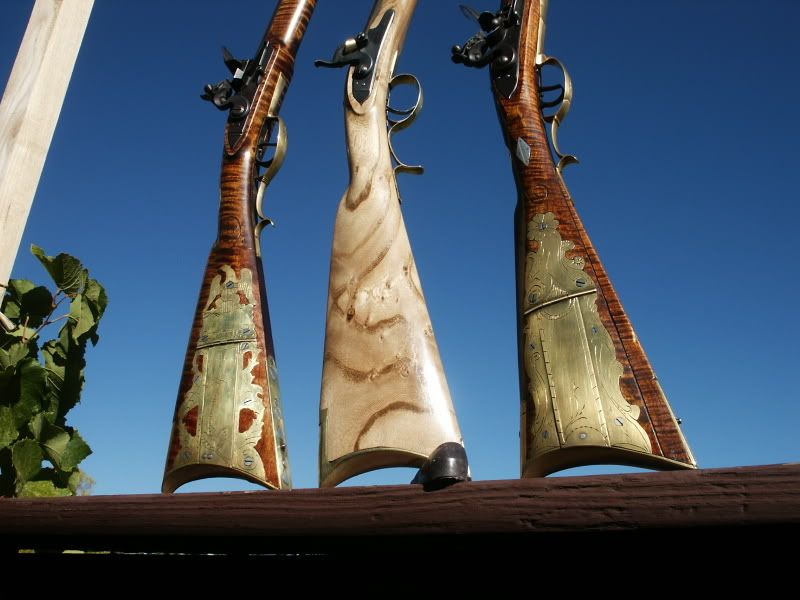Herb
54 Cal.
- Joined
- Mar 19, 2004
- Messages
- 1,955
- Reaction score
- 458
My friend Arn Ufford built my wife a Japanese Tea house, 10x16 feet with a hardwood maple (from Vernal) floor. In turn, I built him a rifle. It is a Jerman Jordan style, page 56 in Ohio Long Rifles Vol II by Whisker. Barrel is a .40 L.C. Rice 13/16 x 38", lock a Durs Egg, trigger guard a Leman, my hand made trigger. The stock wood? Chinese elm, which Arn makes furniture with. He wanted it unstained. Took me 11 coats of gloss Formby's Tung Oil to fill the grain, and then it looked like marble. I like it.

Closeup of the cheek grain

Lock side.

Just for contrast. Left is a .50 I built for Carl, right is a .54 Henry Albright Lancaster I also made. But Arn wanted no decoration at all, just good wood to look at and use. I tested stains on a slab of it, and Fiebing's tan Oil Leather Dye gives it a very nice color, though there is no stain at all on Arn's rifle.

Closeup of the cheek grain

Lock side.

Just for contrast. Left is a .50 I built for Carl, right is a .54 Henry Albright Lancaster I also made. But Arn wanted no decoration at all, just good wood to look at and use. I tested stains on a slab of it, and Fiebing's tan Oil Leather Dye gives it a very nice color, though there is no stain at all on Arn's rifle.





